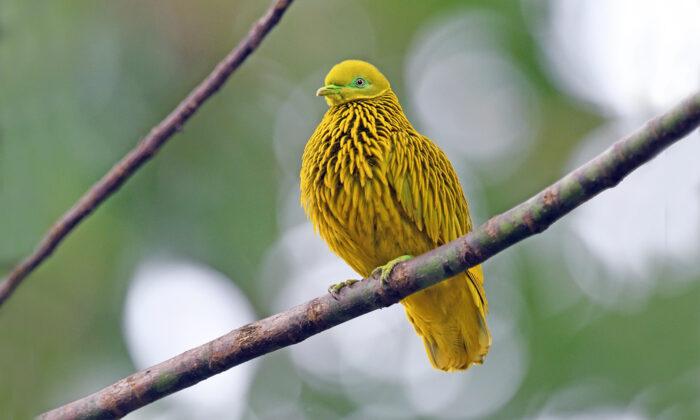Often regarded as disease-filled pests in many cities around the world, “beautiful” isn’t usually an adjective we would associate with pigeons. That, however, doesn’t take into account the far more attractive Victoria crowned pigeon.
Endemic to the island of New Guinea in the south Pacific, these incredible birds are renowned for their spectacular head crests, which resemble layers of delicate blue-gray lace, and their elegant plumage.

Unfortunately, like many rare birds, this special species of pigeon (Goura victoriana) is listed as near threatened by the International Union for Conservation of Nature (IUCN). This makes protecting the pigeon’s native rainforests a key priority.
For those who have only ever seen common pigeons, which comprise the bulk of bird sightings in large urban areas, the Victoria crowned pigeon will come as quite a surprise. First of all, this species of ground pigeon, named for Queen Victoria, is the largest in the world, reaching up to 31.5 inches (90 cm) and a whopping 7.7 pounds (approx. 3.5 kg).

The Victoria crowned pigeon also has an unmistakable coat and crest. One of only three “crowned” pigeons, New Guinea being home to the other two as well, the Victoria wins the prize for most elaborate headdress. Layers of fine, intricate, and colorful feathers tipped in white are what give the males their prowess when it comes to attracting a mate.
Meanwhile, breast feathers can range from maroon to deep purple, giving the bird an unforgettable look. While females aren’t as colorful, their gray crests are just as intricate as their male counterparts.

To maintain their size, these birds have to eat prodigious amounts of fruit, their favorite food being figs. When forests are cut down for timber or to make space for farming, this makes it hard to find enough to eat.

Another issue that faces conservationists has to do with the limited way these pigeons reproduce; unfortunately, females only lay one egg per mating season, meaning that they have a hard time replacing population lost to poaching.
In order to attract females, males must display the detail of their crests in a complex dance. This includes swaying its rear from side to side and bowing its head toward the potential mate so she can see just how handsome his crest is. Once she accepts her suitor, he “brings her sticks, which she weaves into a nest for her single egg,” the National Aviary explains.
The combination of habitat destruction and poaching of a mostly flightless pigeon recalls the most famous extinction event of history: the dodo. “Hunting by humans and the introduction of non-native predators drove the Dodo to extinction in less than 100 years,” the National Aviary explains.





